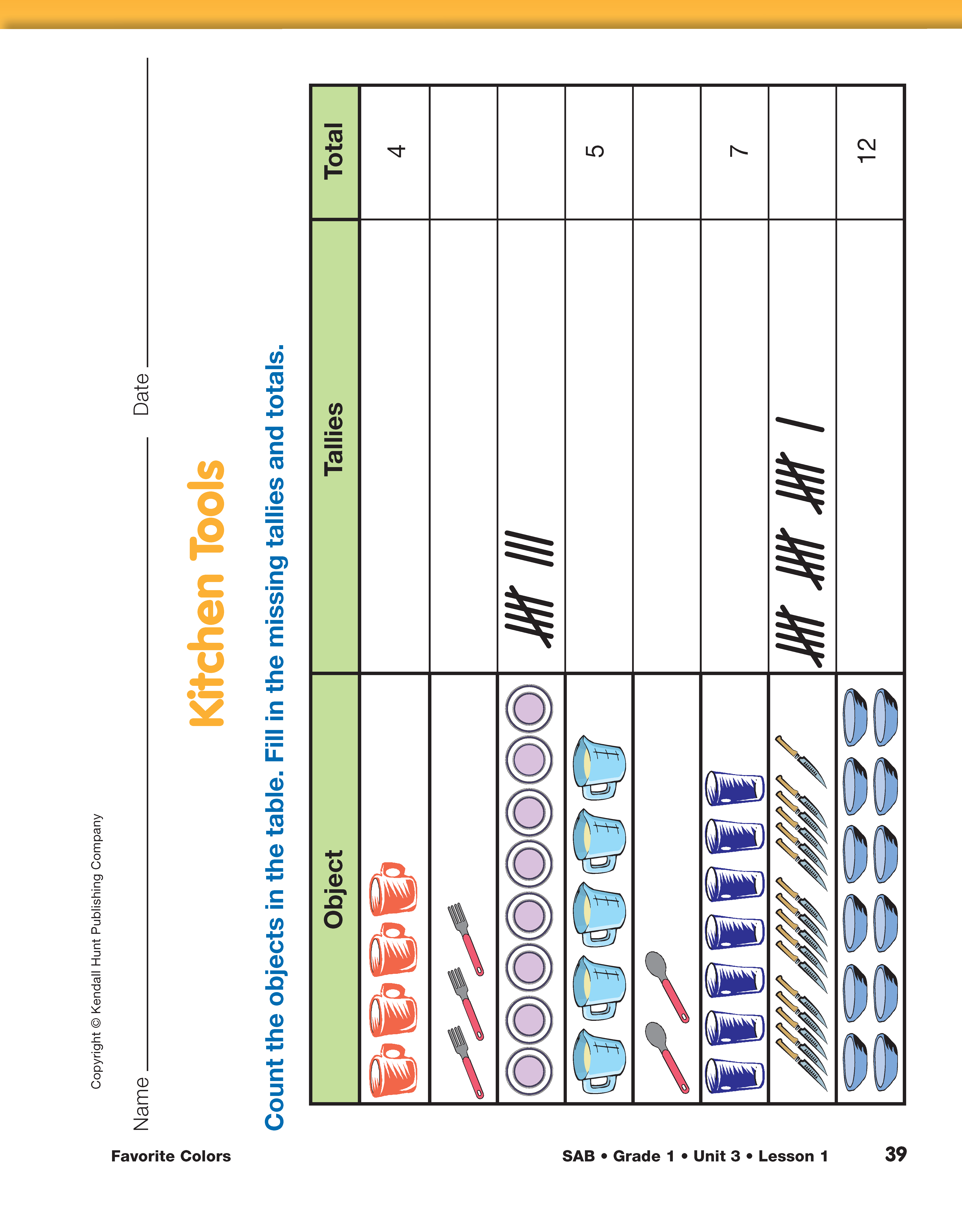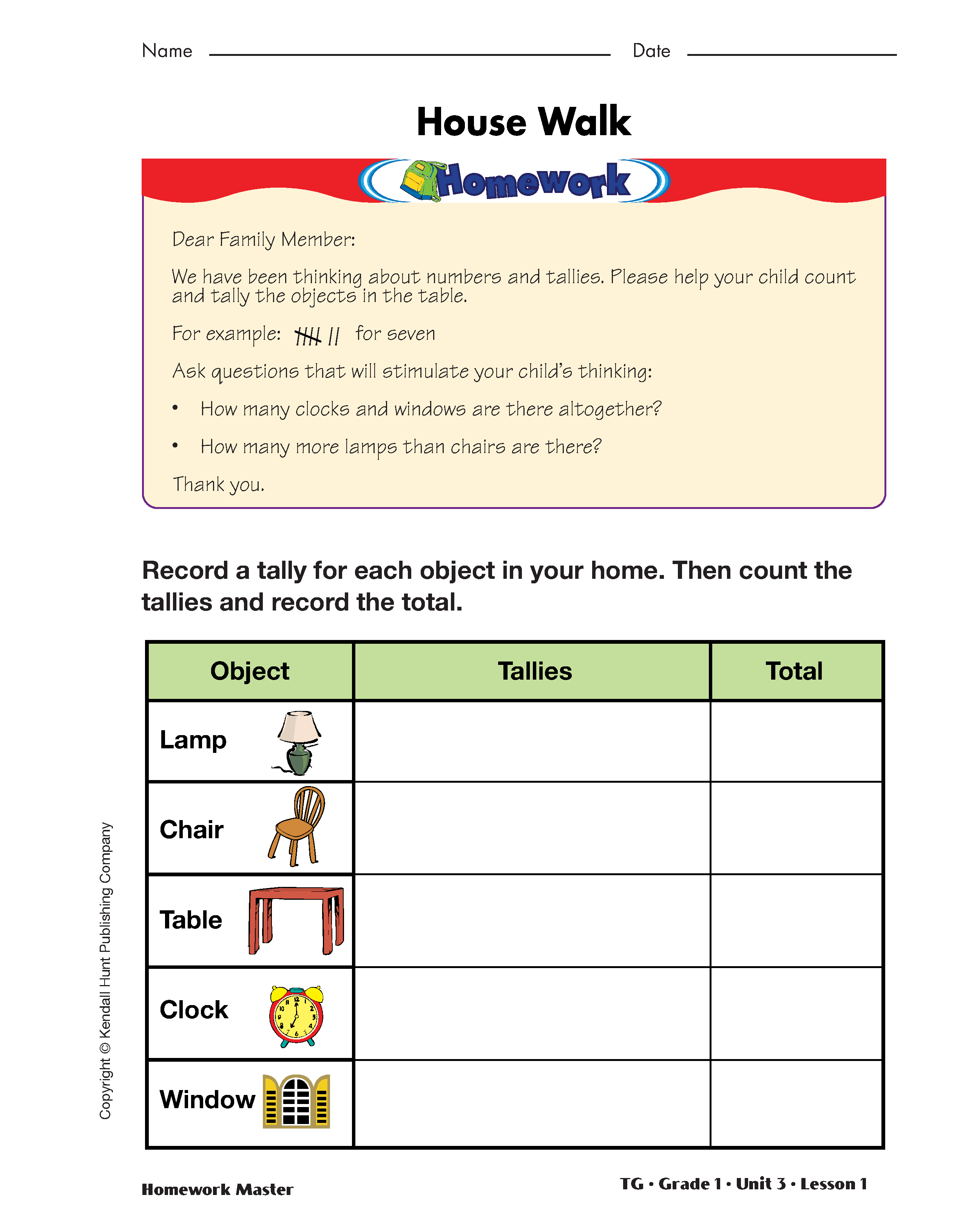Discuss the results in the data table.
- How many students chose red as their favorite color?
- How many students chose blue?
- Which color did students choose the most [least]?
- Are there any colors that the same number of students liked? What are they?
- How many colors did less than five people choose?
- How many colors did more than five people choose?
- Can you tell more than five and less than five from the tallies? How?
- How many students altogether chose green and purple? How can you find out?
- How many students altogether chose red, yellow, and blue? How can you find out?
- How many more students chose [name a color] than [name another color]?
- Why is a chart like this useful? (It makes it easier to remember how many students chose each color. You can tell the favorite color in our class more easily. It's not mixed up like when we were standing up and sitting down.)
Tell students to think about the questions they just
answered using the table. Have students make up
problems for the class using the data in the table.
Students can draw a picture or challenge a neighbor
to compare data before sharing with the class.
Provide time for students to complete the Kitchen
Tools page in the Student Activity Book independently.
Explain that they need to fill in the missing
tallies or totals. On some rows tallies are missing, on
others the number that represents the total number is
missing, and on some rows both are missing. After
adequate time has been provided, discuss solutions
aloud. Then assign the House Walk Homework
Master.
Use the Kitchen Tools page to assess students' abilities to
make connections between representations of quantities
using symbols and tallies [E2] and to use tallies to identify
and represent quantities up to 16 [E1].
Use the Number Book: Many Ways to Show a Number 0–10
and Number Book: Many Ways to Show a Number 11–20
Masters in Lessons 2 and 6 to provide targeted practice with
representing and making connections among representations
of numbers.















